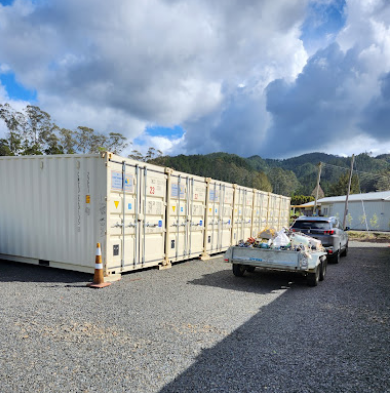
Table Of Contents
Common Mistakes to Avoid
When it comes to dry goods storage, there are certain mistakes that should be avoided to ensure the longevity and quality of the stored items. One common mistake is not properly sealing the containers used for dry goods. Inadequate sealing can lead to exposure to moisture and pests, diminishing the quality of the goods stored. Additionally, using containers that are not designed for dry container storage can also impact the freshness of the items.
Another mistake to avoid is not rotating the stock of dry goods regularly. Failure to rotate stock can result in older items being left unused for extended periods, potentially leading to spoilage or loss of quality. It is essential to implement a system where older items are used first to maintain freshness and ensure that the stored dry goods are used before their expiration dates.
Pitfalls to Watch Out for in Dry Goods Storage
When it comes to dry goods storage, there are several pitfalls that individuals should be mindful of to maintain the quality and longevity of their goods. One common mistake is failing to properly seal containers used for storage, which can lead to exposure to moisture and pests that may compromise the quality of the goods. It is crucial to ensure that all containers are tightly sealed to prevent any external factors from affecting the goods stored within. Additionally, using inappropriate storage containers or not utilizing specialised dry container storage solutions can also be a pitfall to watch out for.
Another pitfall in dry goods storage is overlooking the importance of regular inspection and rotation of goods. Failure to check for signs of spoilage or infestation can result in the storage of expired or contaminated items, which can be detrimental to health and wasteful in terms of resources. Therefore, it is essential to implement a system for regular inspection and rotation of goods to maintain the quality and safety of the stored dry goods.
Shelf Life of Dry Goods
Dry goods encompass a variety of food items that have a longer shelf life compared to perishable goods. The shelf life of dry goods can vary significantly depending on the type of product and the storage conditions. Generally, dry goods such as rice, grains, flour, and pasta can be stored for extended periods in suitable environments. Proper storage is crucial in maintaining the quality and freshness of dry goods. The key factors to consider for prolonging the shelf life of dry goods include controlling temperature, humidity, and exposure to light. Whether stored in a pantry, cupboard, or in dry container storage, ensuring that dry goods are kept in a cool, dark, and dry location can help maintain their quality and prevent spoilage.
How to Ensure Longevity of Stored Dry Goods
To ensure the longevity of stored dry goods, maintaining a consistent temperature and humidity level in the storage area is paramount. Fluctuations in temperature and exposure to moisture can accelerate the degradation of dry goods. It is essential to keep the storage area cool and dry, ensuring that the items are well-protected from external elements. Additionally, proper ventilation in the dry container storage area helps in preventing the development of mold and mildew, which can compromise the quality of the stored goods.
Regularly inspecting the dry goods for signs of spoilage or pest infestation is crucial for preserving their longevity. Implementing a first-in, first-out (FIFO) system can help in reducing food wastage by ensuring that older items are used before newer ones. By regularly rotating stock and conducting thorough checks, you can maintain the freshness and quality of the stored dry goods, ultimately maximising their shelf life.
Labeling and Inventory
Labeling and inventory are essential aspects of managing dry goods storage. Properly labelling containers ensures that items are easily identifiable, reducing the risk of confusion or spoilage. Clear labels should include the name of the product and the date it was stored to help monitor shelf life. Additionally, an inventory system should be established to keep track of stock levels and ensure timely replenishment when necessary. This efficient approach aids in maintaining a well-organised dry container storage space, facilitating smooth operations and preventing unnecessary wastage of goods.
Importance of Clear Labeling in Dry Goods Storage
Clear labeling plays a crucial role in the efficient management of dry goods storage. Properly labelled containers help in easy identification of items, preventing any mix-ups or confusion. By clearly marking the contents of each container, it becomes simpler for employees to locate specific items when needed, thus minimising errors and saving time in the process. In a busy storage facility, having all containers clearly labelled can streamline operations and enhance overall productivity in managing dry container storage.
Additionally, clear labeling aids in inventory tracking and stock rotation. When each container is accurately labelled with essential information such as expiration dates, batch numbers, and contents, it becomes easier to keep track of inventory levels and ensure that items are used before they expire. By implementing a robust labeling system, businesses can effectively monitor their stock levels and prevent any wastage due to expired goods, ultimately optimising the storage and usage of dry goods.
FAQS
What are dry goods?
Dry goods are non-perishable food items that do not require refrigeration to maintain their quality and can be stored at room temperature.
What are some examples of dry goods for storage?
Examples of dry goods include rice, pasta, flour, sugar, beans, lentils, cereals, dried fruits, nuts, and spices.
How should dry goods be stored to ensure their longevity?
Dry goods should be stored in a cool, dry place away from direct sunlight and moisture. They should be kept in airtight containers to prevent exposure to air and pests.
How can labeling and inventory management help in dry goods storage?
Labeling dry goods containers with the date of purchase and expiry, as well as maintaining an inventory list, can help in tracking the freshness of the items and prevent wastage. Proper labeling also assists in easy identification of items in storage.
Why is it important to avoid mixing different types of dry goods during storage?
Mixing different types of dry goods can lead to cross-contamination, affecting the quality and taste of the items. It is essential to store similar items together and maintain proper hygiene to prevent any unwanted interactions between different products.




